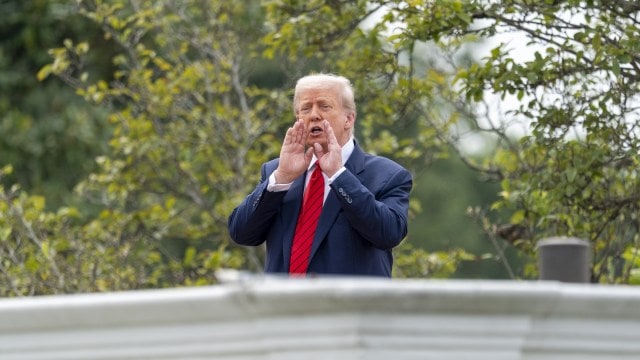
As global powers realign in an era of transactional diplomacy and economic nationalism, India must shed the misconception that its balancing act is either infinite or without consequence. New Delhi would do well to disentangle two entwined issues that are threatening to blur its economic priorities: Secondary sanctions related to the Russia–Ukraine war and the urgent necessity of concluding a focused, bilateral trade agreement with the United States.
The convergence of these issues — whether by strategic accident, geopolitical design, or tactical folly at not taking the August 1 deadline seriously and believing too much in TACO (Trump Always Chickens Out) — should be resisted. They are not the same, and treating them as such will cost India more than it imagines.
India needs to pursue a standalone, surgical trade deal with the US, one that is delinked from the drama of Eurasian entanglements and calibrated purely to mutual economic benefit. This is not a matter of deference but of disciplined realism. The United Kingdom understood this when it concluded its own trade arrangement. So did Canada, even if less so, as did the European Union. India is no less sovereign, and must act fast, with no less clarity. India, like Brazil and China and others, must stand up to the bully with respect to its energy needs while also concluding a trade deal swiftly with the US on its own terms, with full dignity of sovereign self-interest.
The notion that India, by virtue of scale or civilisational gravitas, is indispensable to the US is not supported by evidence. The current US posture is driven not by allegiance but by mercantile pragmatism. As industries are reshored, supply chains re-nationalised, and trade recalibrated through the lens of domestic manufacturing and security, India must choose between sitting on the fence or stepping into the arena with open eyes and measurable proposals.
This is not to abandon strategic autonomy. It is to practice it more effectively. A discrete trade negotiation, decoupled from the complications of Eurasian geopolitics, would signal India’s maturity as a sovereign actor with the ability to compartmentalise, prioritise, and execute.
Concurrently, India must engage the US in a dedicated and dispassionate dialogue on secondary sanctions emerging from the global oil market, one that is distinct from the trade channel and focused purely on energy diplomacy. India’s positioning in the secondary oil resale market has drawn increasing scrutiny. But conflating these concerns with broader trade friction risks sabotaging both arenas. They require separate negotiators, distinct frameworks, and independent timelines.
There is also a more subtle risk that India must guard against: The possibility that Russia itself, seeking a way out of its geopolitical cul-de-sac, may be nudging third parties — openly or tacitly — to turn India into a convenient friction point. Should secondary sanctions from Washington intensify under strategic pressure, New Delhi must ask: To whose advantage?
It would be strategically naive to assume that Moscow’s embrace of India is unconditional or permanent. On the eastern flank, Russia has grown ever more entangled with China. On the western front, its long-term calculus may demand a face-saving realignment with the West.
India must become neither the scapegoat in this geopolitical equation, nor the hashtagged villain in a post-facto narrative that blames Delhi for “ruining the peace Trump could have delivered,” should such MAGA-infused revisionism take hold. In the volatile landscape of online perception, such miscasting could incur not just strategic cost but global reputational damage at scale.
The long-imagined troika of Russia–India–China (RIC) as a counterweight to Western alliances must be set aside, permanently. The premise no longer holds, if it ever did. India’s territorial disputes with China are unresolved and, if anything, have deepened. PM Modi’s going to China in a few weeks is unlikely to change that. Russia’s tactical alignment with China — both economically and militarily — undermines the fantasy of a balanced tripartite bloc. While Russia may still hold value as a defence partner and energy supplier to India, the geopolitical vectors no longer align. Any Joint Asia Treaty Organisation or Joint Security Force, as imagined by those nostalgic for a postcolonial counterorder, has no operational basis.
Institutions such as SCO and BRICS, while useful for dialogue, lack the doctrinal coherence, enforcement mechanisms, or financial architecture that underpin Western multilateralism. Without equivalents to NATO’s Article 5 or SWIFT’s enforcement grid, they are more symbol than system. India must, therefore, act accordingly: Engage where useful, but not expect deliverables that the structure cannot support.
India’s commitment to strategic autonomy remains noble and necessary. But autonomy is not indecision, and neutrality is not nuance. In this moment, clarity is strategy. India must also guard against an outdated postcolonial reflex — the impulse to view every demand from the West as humiliation, or every disagreement as an affront to national dignity. This is not 1919. This is not the Raj. The Trump administration’s tariff posturing is not colonial subjugation; it is mercantile chest-thumping, rooted in voter optics and bargaining leverage.
Indeed, if approached correctly, Trump may even be charmed. His transactional instincts, while disruptive, are not immune to persuasion, particularly when met with clarity, personal rapport, and an offer he can claim as a “win.” India must act not with defensiveness, but with deftness.
In a world shifting from liberalism to logistics, from alliances to alignments, India’s success will lie not in invoking moral symmetry but in executing with speed, focus, and flexibility. The loss is India’s if it delays. The gain, if acted on swiftly, could redefine India’s global positioning in an era where economic partnerships, and not speeches, shape strategic relevance.
The writer is a global policy advisor and strategist specialising in humanitarian diplomacy, economic governance, and international development. He has worked with the UN, World Bank, and international institutions in over 15 countries